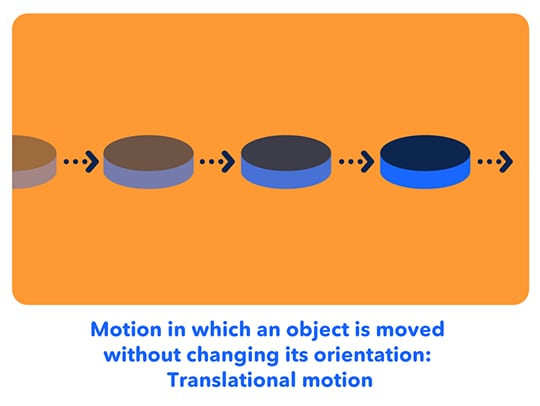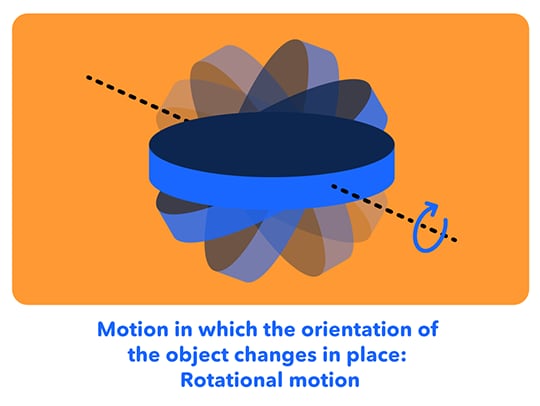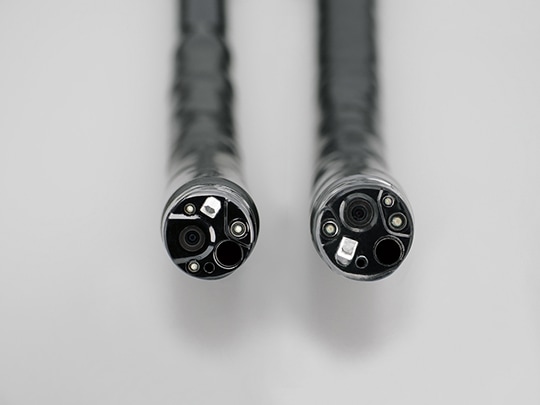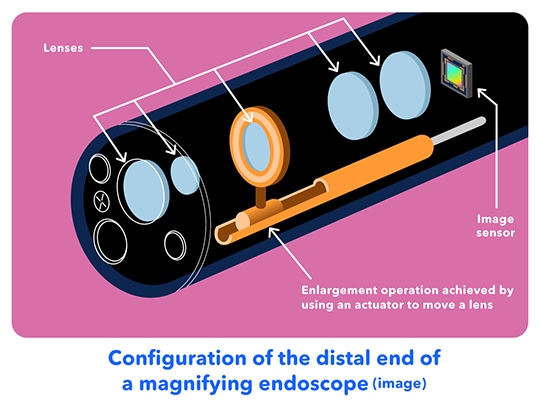What is an Actuator?Device that changes energy into motion
Actuators are used in various types of precision devices, such as robots and cameras. They are essential to the high-precision machinery operations, such as the opening and closing of covers and the extending and bending of tube ends. However, because actuators are frequently mounted in out-of-sight locations or called by different names, many people have likely never seen or even heard of one before. In this article, we explain what an actuator is and where it is used.
★Trivia
Actuators that use rotation or reciprocating (or back-and-forth) motion to generate vibration are used in smart phones, game controllers, and other products equipped with a vibration feature. They in fact play quite a ubiquitous role in our daily lives.

So, what's an actuator?
An actuator is a device that converts energy into some kind of "operation", such as linear movement, rotation, or bending. In addition to electricity, the input energy comes in a variety of forms, such as air (pneumatic) or oil (hydraulic) pressure, magnetic force from electromagnets, steam, and heat. Using actuators lets us do such things as move objects and control their motion.


For example, servo motors, actuators that are electrically operated, are used to move the joints of robots and to change the direction of radio-controlled car by moving their tires. Power shovels and other construction equipment use actuators called pneumatic cylinders, which rely on oil pressure to extend and retract. In addition, there are also actuators that move objects so small as not to be visible to the human eye and actuators that control the operation of other actuators.
In the general sense, motors and engines also fall into the category of actuator. There are also actuators that operate using the driving force generated by motors and engines. Given the many types of actuators and the many types of input energy, signals, and operations they drive, we see that large numbers of a variety of actuators are used in the machinery and devices operating in the world around us.
What kinds of actuators are there?
Here we present a few typical kinds of actuators.
Servo motor
This is an actuator that uses electricity as energy. It combines into a single element the three elements of a motor, a detector that detects such information as the position to which the motor has rotated, and a device that controls these. This makes it possible to move an object at a designated speed to a target position. Servo motors are used in a variety of devices, including machines that operate in vehicles and factories as well as the robots and radio-controlled cars we mentioned above.
Electromagnetic actuator
These are actuators that operate using the magnetic force from electromagnets as energy. Electricity is applied to a built-in coil to generate magnetic force, which then moves an iron core passing through the coil, thus enabling the performance of back-and-forth and rotational operations having short travel amounts. Electromagnetic actuators include solenoid actuators and voice coil motors. As they move more quickly than cylinders operated by air or oil, they are used in switches that control machine motion, in the opening and closing of valves that control air and water flow, and in other such applications.
Piezoelectric actuator
These are actuators that use piezoelectric elements, which deform upon application of electricity. Although their operational travel is extremely short, due to the high speed at which they can be operated, they are used in such applications as devices that generate ultrasound. They also find application in drive units for extremely small medical devices that can be inserted into the human body and in fine micromachining technology.
What kinds of products are actuators used in?
Olympus products also use various types of actuators.
One example is the endoscopes, used for imaging the inside of the stomach and colon, have lenses mounted on their distal ends.
Endoscopes, used for imaging the inside of the stomach and colon, have lenses mounted on their distal ends. To operate these lenses inside the human body, they use an actuator as thin as human hair. This enables the operator to quickly magnify and view areas that are factors in disease. Because operation during the procedure is in the order of a mere 0.5 mm, extremely precise control is necessary.

The distal end of Olympus endoscope

As presented above, precision actuators are indispensable to medical applications, and to other applications requiring the latest technology. Olympus products make use of a variety of actuators developed using proprietary technologies. Utilized not only in our daily lives, but also in the latest medical areas, these products are helping create a better future.

